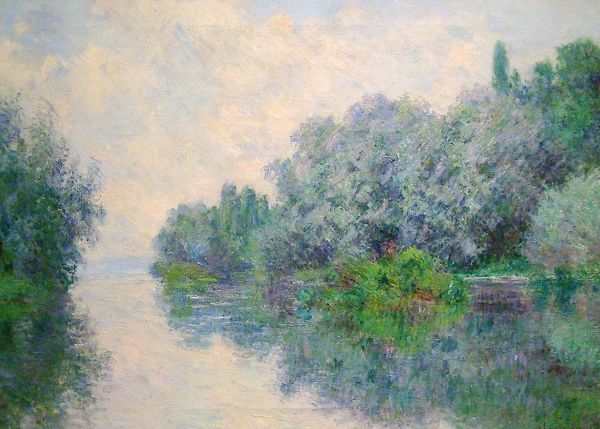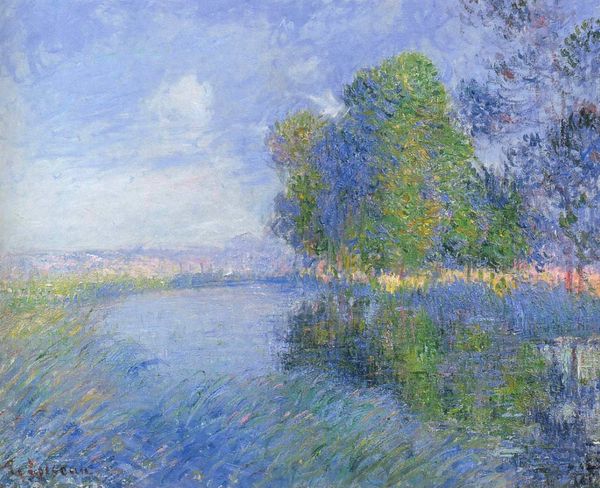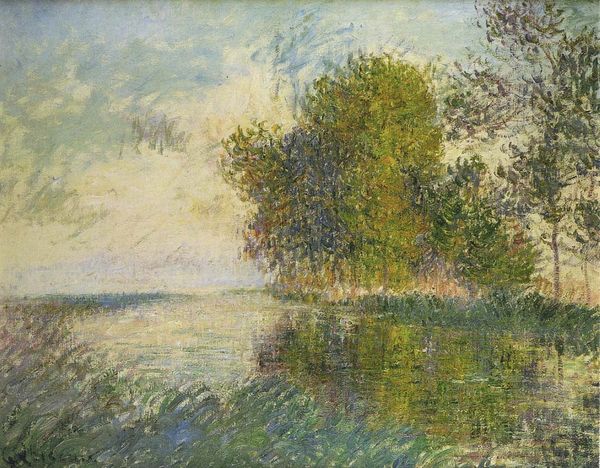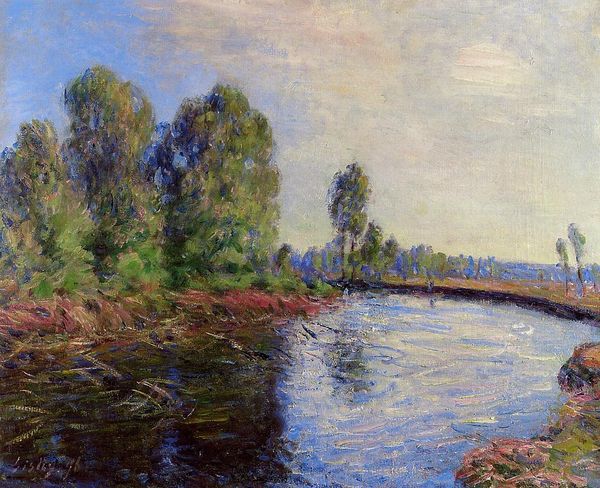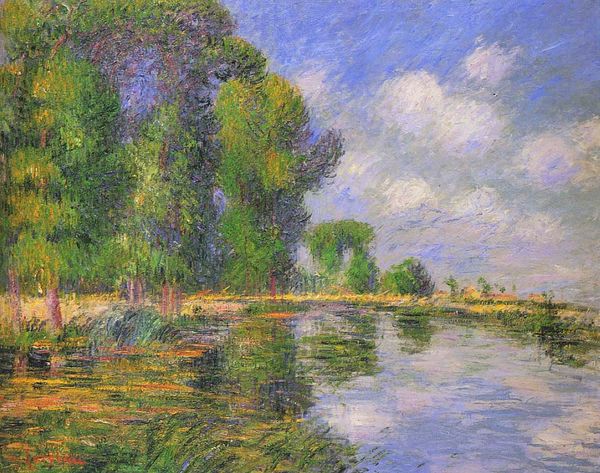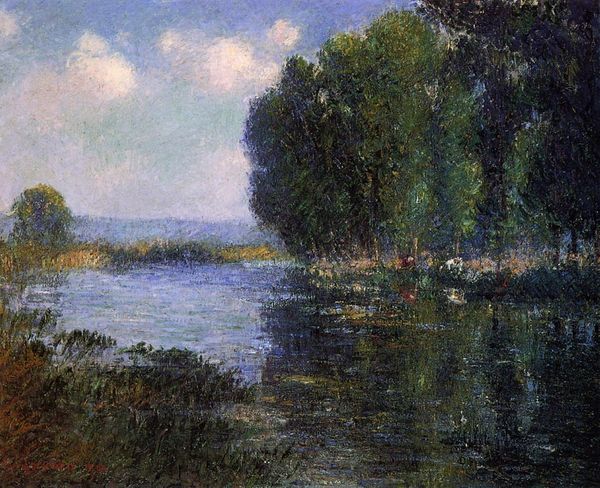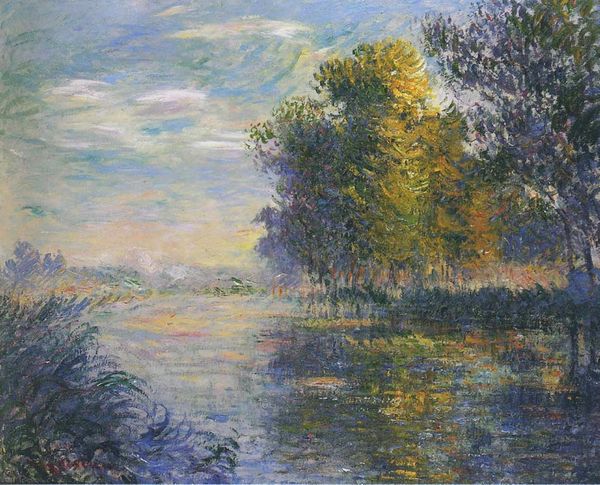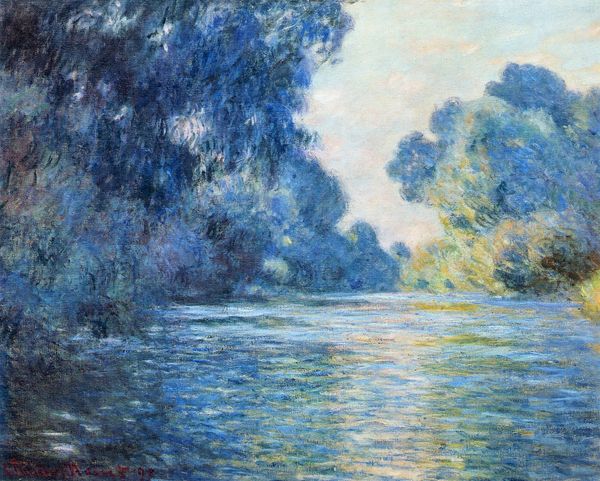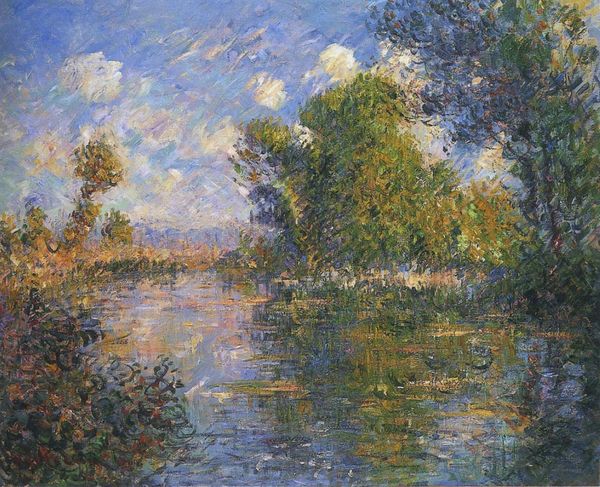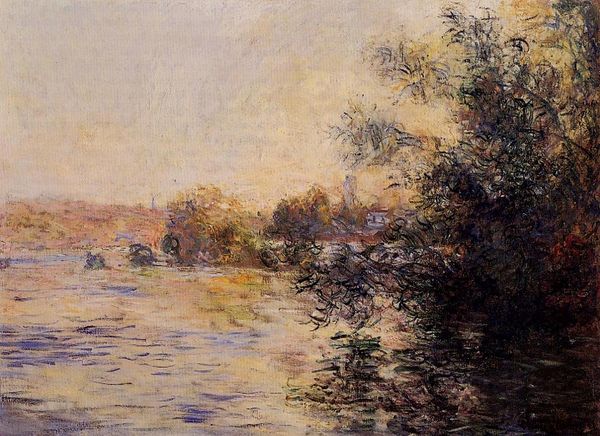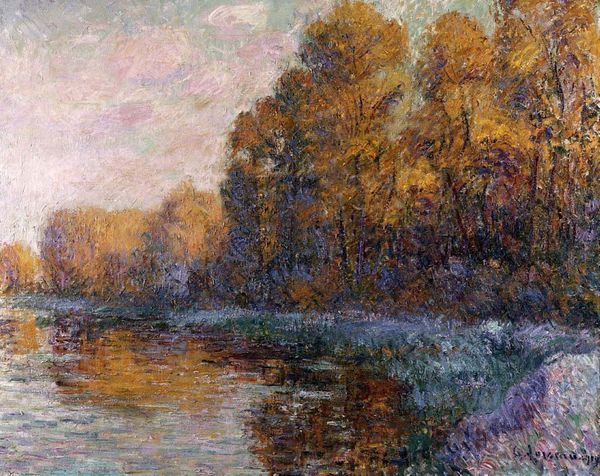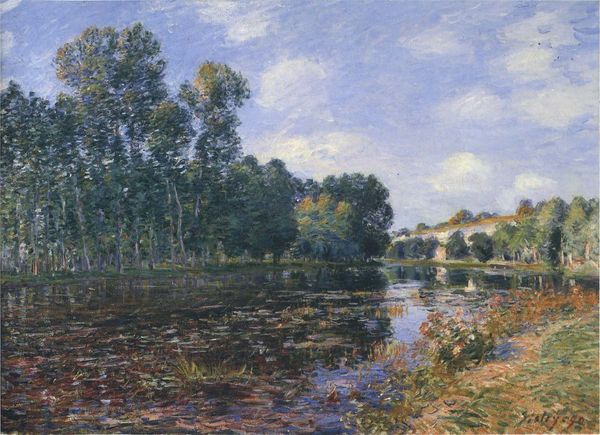
painting, plein-air, oil-paint
#
tree
#
impressionist
#
painting
#
atmospheric-phenomenon
#
impressionism
#
plein-air
#
oil-paint
#
landscape
#
river
#
impressionist landscape
#
seascape
#
natural-landscape
#
men
#
water
Copyright: Public domain
Curator: Standing before us is "The Seine near Giverny," painted by Claude Monet in 1885. It’s an oil on canvas work, quintessential Impressionism. Editor: It feels like a whisper. The light, the water... everything seems to dissolve into this hazy, dreamlike reflection. Very serene. Curator: Monet’s commitment to *plein air* painting, painting outdoors, allowed him to capture these fleeting atmospheric effects so precisely. He was essentially setting up a small-scale, portable production line *en nature*. Editor: Which becomes obvious when you consider the broader market. The late 19th century witnessed a surge in portable painting equipment, making outdoor work feasible and, importantly, marketable. But let’s consider Giverny. Monet's eventual home there cemented his legacy; that place and that light became commodities in and of themselves. Curator: Absolutely. And this particular piece showcases how the very act of seeing was being revolutionized. He’s not trying to replicate reality perfectly, but to convey the sensation of light and color as perceived by the eye, using distinct, visible brushstrokes. Notice the impasto and the deliberate sketchiness. Editor: That connects directly to the increasing industrialization of art supplies, doesn't it? The pre-mixed paints in tubes gave artists an unprecedented freedom – Monet didn't have to grind his own pigments, enabling greater output for consumption by a bourgeoning middle class eager for accessible, comforting landscapes. Curator: Exactly! The social context is crucial. Monet isn't just painting pretty pictures; he's engaging in a whole new means of artistic production, driven by market forces and facilitated by material innovations. Editor: So, it's both a radical departure in terms of visual language and an expression of, perhaps even a participation in, the prevailing cultural and economic shifts. Looking at it this way invites us to re-think his entire career, doesn't it? Curator: Precisely. Art, even serene landscapes, exists in a complex web of production, distribution, and consumption. Editor: Well, this certainly offers more to ponder than just a pretty river scene! Curator: Indeed, seeing the Seine, and Monet, anew.
Comments
No comments
Be the first to comment and join the conversation on the ultimate creative platform.
